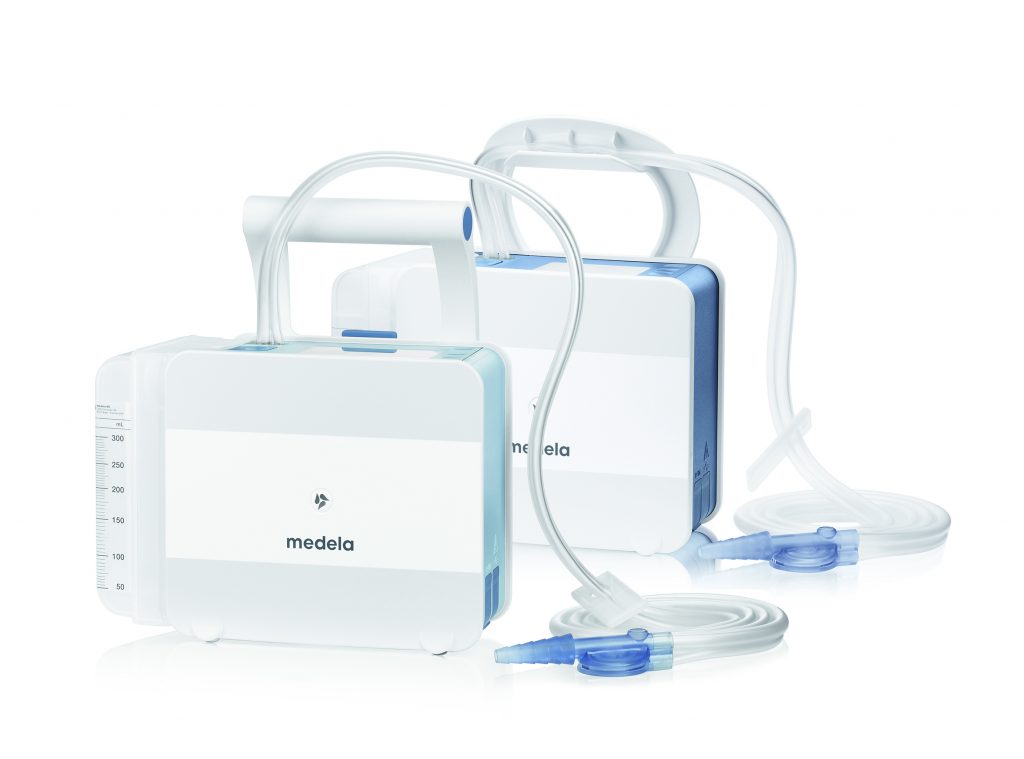From Heber-principle to digital systems, thoracic surgery has significantly changed and improved over the course of time – so has chest drainage. Ten years ago, chest drainage therapy as we knew it was completely overhauled with the introduction of digital drainage systems. An on-board motor creating vacuum in a closed system consisting of tubings and fluid collection container opened a whole new way of how to manage chest drainage patients. In addition to the option to mobilise all patients with a chest drain, digital drainage systems also allowed the general reduction of complications [1]. These systems monitor the patient and alert if the measured data are out of range. Due to the digital control of the negative pressure, the system is able to objectively quantify the presence of parenchymal leakage.
Based on science and innovative research, Medela has continuously proven to be a technology leader in this area. In 2007, Thopaz™ was introduced as the first truly portable, digital drainage system. In 2014, Thopaz + was launched, the first digital drainage monitoring system with electronic measurement of air-leak and drained fluid. Vast amounts of clinical and global experience show how 10 years of digital drainage have truly impacted the medical field:
- 1,500,000 patients on chest drains worldwide have experienced the benefits of Medela’s digital systems in the past 10 years
- Patients benefit from a significantly shorter chest tube duration (study results show 1.1 days shorter chest tube placement on average with Thopaz™) [2]
- Thopaz + is cost saving compared with conventional chest drains for people who need drainage after a pulmonary resection or because of a collapsed lung. Healthcare systems and hospitals benefit from shorter length of hospital stay. NICE resource impact assessment concluded that, at a national level, adopting Thopaz + is expected to save around £ 8.5 million per year in England (a study from Italy showed €751 saved per patient with Thopaz™) [3] [4]
Medela Healthcare is working with various leading clinicians, researchers and healthcare institutions to bring innovation in thoracic surgery to hospitals and to help revolutionize post-operative patient care.
Marcel Hohl, Vice President of Global Marketing at Medela Healthcare, says: “We are very proud to announce the 10-year anniversary of digital chest drainage. During these past 10 years, thoracic drainage research has become a key element of our success and, with the help of our partners; we have reached many milestones that are proof to us that this innovation is here to stay. The previous launches of Thopaz™ and Thopaz + only mark the beginning of this exciting journey. Medela takes great effort to take a modern role in medicine exploring the power of data to eventually allow for better health profiles and predictive models for patient with a chest drain.”
References
[1] Read Miller, DL. et al., Digital Drainage System Reduces Hospitalization After Video-Assisted Thoracoscopic Surgery Lung Resection. Ann Thorac Surg. 2016 Sep;102(3):955-961, Leo, F. et al., Ann Thorac Surg. 2013 Oct;96(4):1234-9
[2] Pompili, C. et al., 2014: Multicenter International Randomized Comparison of Objective and Subjective Outcomes Between Electronic and Traditional Chest Drainage Systems. Ann Thorac Surg. 98: 490-497.
[3] NICE Guidance MTG37: https://www.nice.org.uk/guidance/MTG37
[4] Pompili, C. et al., 2011 Nov: Impact of the learning curve in the use of a novel electronic chest drainage system after pulmonary lobectomy: a case-matched analysis on the duration of chest tube usage. Interact Thorac Surg. 13(5): 490-3

